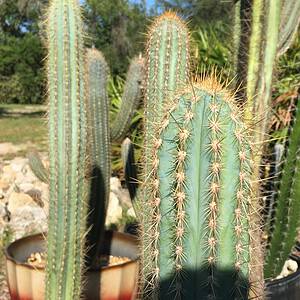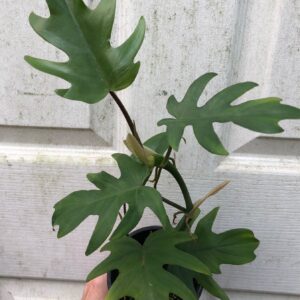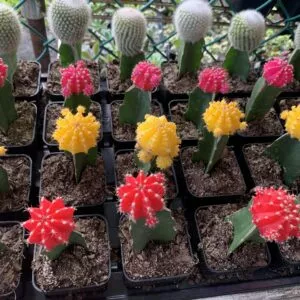No products in the cart.
Table of Contents
Do you love Asian cuisine? Then you’re going to fall in love with the kaffir lime tree. Why as it is the main element in Thai curry and stir-fries and makes a delicious tangly lime zest.
The best part is the tree cultivates easily outdoors and makes for a great indoor plant. But, still grown indoors, watch out for those (ouch) thorns!
So let’s dig in and find out about your new potted plant.
What is Kaffir Lime Tree?

Kaffir lime trees come from Southeast Asia, also known as makrut lime. Unfortunately, where I come from in South Africa, the word kaffir is a racial slang word not permitted to use as per the law.
The term refers to non-Muslims, and Swahilian Africans sold into the slave trade centuries ago. The phrase Kaffir was also part of an ethnic group years ago in Sri Lanka descended from the Bantu people.
Hence, with political changes, most people here refer to the tree as the makrut lime. It is an evergreen citrus tree that can grow up to 35 feet tall. Still, grown as a container plant, it grows up to six feet.
The bush has hourglass-shaped leaves with a leaf blade that is twice the size of the petiole and on thorny branches. During spring, you see white flowers, and it is self-pollinated. Once the flower dies, it forms a green fruit with a bumpy exterior.
As the fruit ripens, the skin starts to turn yellow. Many gardeners hand pollinate the kaffir lime when it grows indoors. When you crush the kaffir lime leaves, it has an intense citrus fragrance with a unique flavor found in foods.
Even the fruit rinds add an aromatic flavor when you use them in a curry base paste. You also find the citrus fruit in rums. Furthermore, the skin helps repel insects like lice, fleas, and mosquitos. You can find it in essential oils used in aromatherapy.
Now, the big question is how long the kaffir lime tree takes to produce fruit. Well, it can take up to three years from the sapling stage. Still, you can prune the tree to keep it small, but it is a challenging job because of the thorns.

Kaffir Lime Trees Care

Kaffir lime (Citrus Hystrix) grows comfortably in a container at least three feet deep. If you live in the tropics, the kaffir lime tree thrives outdoors, and the best time to plant is in late fall. Also, never transplant these citrus trees in winter, as it will put your tree at risk. For outdoor growing, also place your tree far away from other fruit trees as they can grow tall.
Soil Mix Suitable for Fruit Trees

As the fruit trees are from the tropics, it needs fertile sandy soil to help promote drainage. You can fill the hole or a pot with a mixture of garden soil you can amend with well-rotted compost and sand. The fantastic thing is that these lime species can survive in poor soil but needs ample drainage.
Kaffir Lime Tree Sunlight Needs
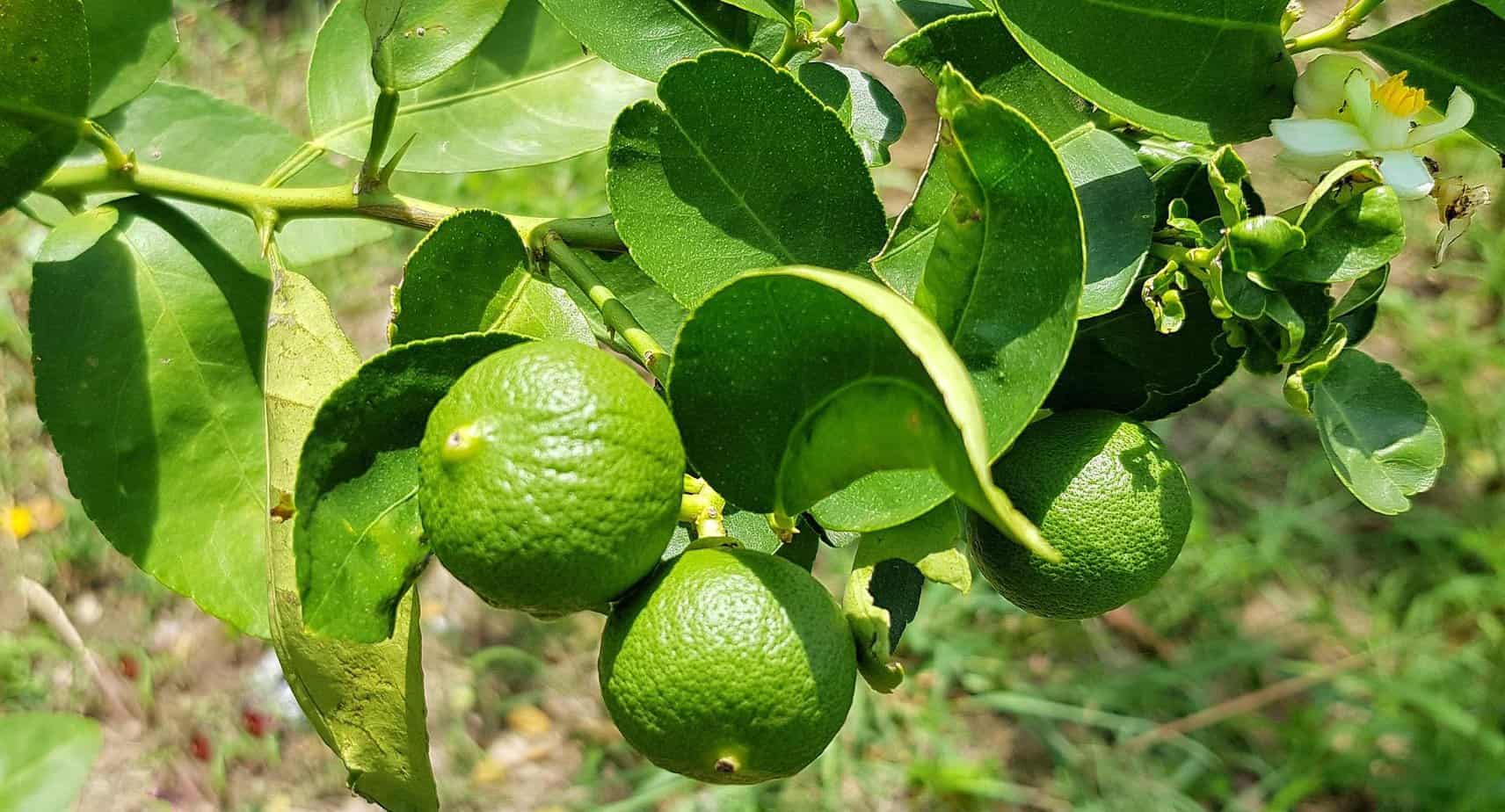
As tropical plants, kaffir limes need to stand in full sun. So, it needs at least eight hours of sun. Thus, if grown indoors, place it in a window to receive enough natural light.
Hence, the more sun it can get, those dark green leaves remain gorgeous, producing the limes you will fall in love with.
We recommend taking the plant outdoors during summer but do it gradually to prevent shock. You can increase the hours outdoors for the tree to adapt.
Watering Requirement

For growing in dry outdoor climates, we recommend watering your tree regularly at the base of the trunk. You can do this early morning, and best to avoid wetting the foliage. The best is to allow the soil to dry out between waterings to prevent the root ball from rotting.
It helps to use drip irrigation for outdoor growing, or you can use a soaker hose. Still, if it has rained a lot, avoid watering and water well during the growing seasons as it is the fruiting phase. The same watering schedule counts for indoor growing.
Kaffir Lime Tree Thrives in Warm Temperatures
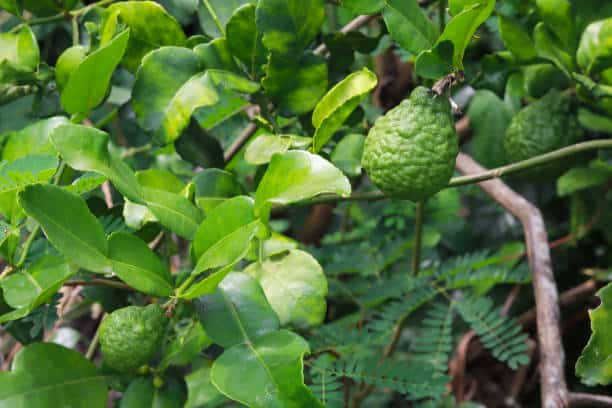
Okay, one thing that can bring down this mighty tree is cold weather. Kaffir lime trees thrive in warm temperatures with high humidity.
You can keep your citrus trees outside, but it is best to bring them indoors when the temperatures drop.
If you cannot bring your tree inside, you can cover the kaffir lime leaves with a frost cloth. Temperatures below 50° can result in your tree stunting flowers and fruit production.
Pruning Kaffir Lime Tree
Okay, when pruning these citrus trees, wear durable gloves as they will stab you easily. In addition, you will need loppers and need to prune at the branch node.
You can prune back the branches a couple of inches if they look weeping. Furthermore, pruning is essential to keep this tropical Southeast Asia tree small.
Also, remove diseased or dead branches that look dark brown below the bark. At the bottom, you can remove the tiny sprouts to save for propagating new saplings. Even the branches growing towards the trunk need removing.
Fertilizing of Kaffir Lime Tree
After the first growth, you can use a slow-release fertilizer for citrus trees. You can feed your tree three times per year using a few tablespoons for mature trees. The best is to apply the fertilizer in early spring, early summer, and late summer.
During winter, refrain from feeding as it might shock your tree.
Propagating Makrut Trees
Remember those small shoots you pruned from the tree? Those tiny buds and suckers can be rooted using a starter pot. You can remove the bottom leaves and dip the end into a rooting powder. Then place the cutting on a tray but do not let them touch each other.
Next, spray some water over them and place a clear plastic bag over the tray. Keep your cuttings in low light at room temperature, and new roots should develop in about six days up to six weeks. But remember to keep removing the bag for air ventilation and keeping them moist.
Lime Tree Varieties
As with the kaffir lime, you can find other great varieties to use the fresh leaves and fruit as an essential ingredient in cuisine and essential oil. When using the crushed leaves, all of the citrus trees emit aromatic flavors.
Bartender’s Lime

Citrus aurantifolia Swingle has highly aromatic leaves. But the fruit is the size of a ping pong ball and less acidic than other lime species. Many people mistake it for lemon, but the lime color ranges from green to yellow. The skin is smooth and thin, loaded with seeds.
Limequat
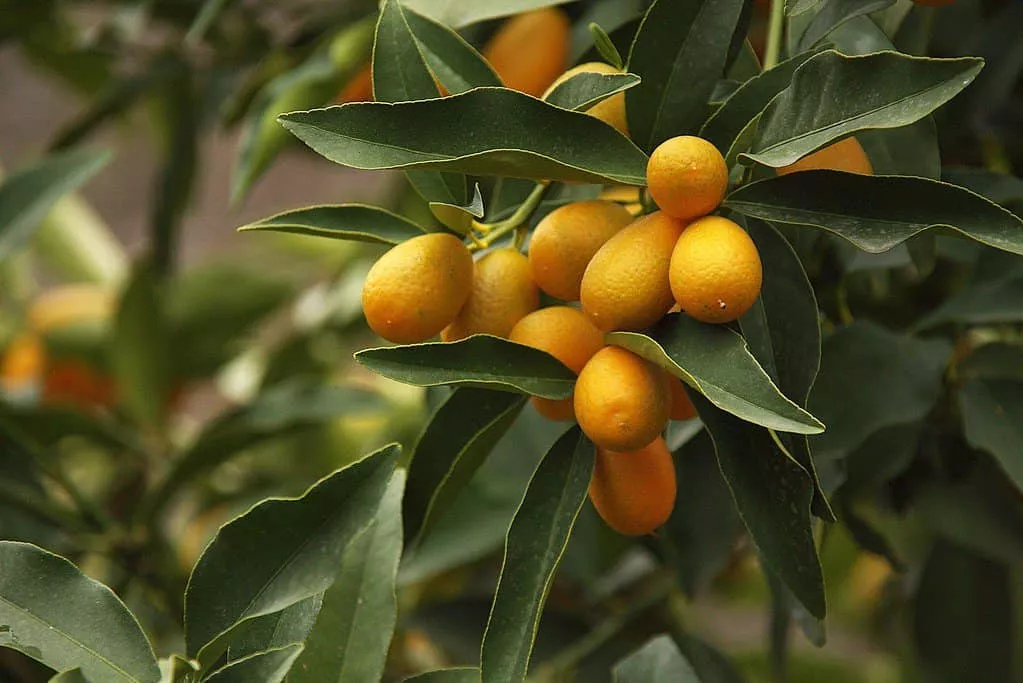
Citrus x Fortunella is a hybrid from China, and the tree develops limes in the fall and winter months. You find three species Eustis, Tavares, and Lakeland. The fruit is oval and small with a greenish-yellow hue. You can eat the fruit whole or use it in juice.
Kaffir Lime Tree Diseases and Pests
Kaffir lime has an astringent flavor, while the kaffir lime leaves add an aroma to any home. But it does not mean that a healthy tree cannot develop problems. The most common pests are ants, as they harvest on the honeydew from aphids.
To remove ants, you can mix equal parts peanut butter, honey, and borax into a paste and fill up old bottlecaps to set around the tree base. Alternatively, you can paint the trunk with Tanglefoot Trap to prevent the ants from getting to the fruit.
Another concern is the cottony cushion scale, and you see the pest forming like fluffy white bumps on the tree trunk and branches. You can use rubbing alcohol with a cotton swab on them to remove them.
Or you can use horticultural or neem oil to kill the spider mites, mealy bugs, leaf miners, whiteflies, and the cottony cushion scale. A common disease is a citrus canker which appears with yellow ringed lesions on all parts of the tree.
The lesions turn gray with a fuzzy center, and the damaged parts need to be removed. You can use a copper fungicide spray to cover all tree parts. Also, contact the local agricultural department as some have agricultural restrictions in place for this disease.
Other bacterial and fungus infections are greasy spots, root rot, and citrus greening.
Frequently Asked Questions
The citrus tree can grow up to 35 feet tall and needs ample space outdoors away from the home and other trees. You can grow the tree in a container and prune it to keep it small, about five feet.
Yes, you can use kaffir limes in your food using the rind and adding it to juice. Furthermore, the fruits you can add to Thai dishes give an aromatic flavor.
The fruits of the kaffir lime are bumpier, while the lime tree fruits are smoother. The branches of the kaffir lime tree are also very thorny, and the most popular part of the tree is the leaves.
The kaffir lime tree you can find at your local garden center. But if you want comfort without leaving your home, Plantly has this zesty fruit tree available here to buy.
Whether you want to buy, sell or simply reach out to other plant enthusiasts, Plantly is the right place to be!
In stock In stock In stock
$17.95
Sold By:
Orchid Stuff Plus
$23.95Stunning Snake Plant Sansevieria Zeylanica in a 6 inch pot!
Only 2 available and it’s in 1 people’s basket Rated 5.00 out of 5 based on 1 customer rating00
Sold By:
Orchid Stuff Plus
$25.95
Sold By:
SunSoul Plants
$42.95Philodendron Mayoi Plant in 4″ pot, philodendron Tahiti
Rated 4.87 out of 5 based on 98 customer ratings00
Sold By:
SunSoul Plants
$29.99
Sold By:
BubbleBlooms
Grafted Moon Cactus / Ruby Ball Cactus Set of 4 different colors
Rated 4.81 out of 5 based on 279 customer ratings00
Sold By:
BubbleBlooms

